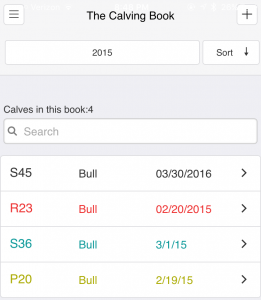Now, where did I leave that darned calving book? If you have cattle, you’ve certainly uttered those words at one time or another. Yet, in today digital world, there’s ample opportunity to shed the pages of the past and make herd management a whole lot easier.
Ellen Schlechter said that about four years ago, her father had been looking for an app to manage calving at their farm. Too often, they had several people who were handling the farm’s calving book, and it often ended up misplaced.
Schlechter’s father couldn’t find a digital solution already on the market.
“I was told to make it happen,” she said.
This, despite not having any background in software development. She had tried to learn code to build it the traditional way, but time was limited while she was still in school.
“It had taken a lot of research and time just to figure out how to do even one little thing,” she said.
Ultimately, she came across a platform online that would allow her to drag-and-drop features into an app and implement her own code to make it all work together. Thanks to that breakthrough, the Calving Book App was born. Development was started in July 2014 and completed in November of that year.

Schlechter has simplicity in mind for her app, as well as customization. Among the features:
- Only one login needed per operation.
- No internet connection required.
- Tracks breeding, pregnancy-checking, calving, and weaning records.
- Locate and retrieve records easily.
“I knew that it couldn’t be a complicated app. Otherwise it wouldn’t have been a successful project,” Schlechter said.
She’s continuously adding featuring and listening to feedback from customers, so expect there to be more to come.
The download, priced at $19.99 for the Pro version and 24.99 for the Plus version, is available in both Apple’s App Store and in the Google Play Store. To learn more, go to www.thecalvingbook.com.



